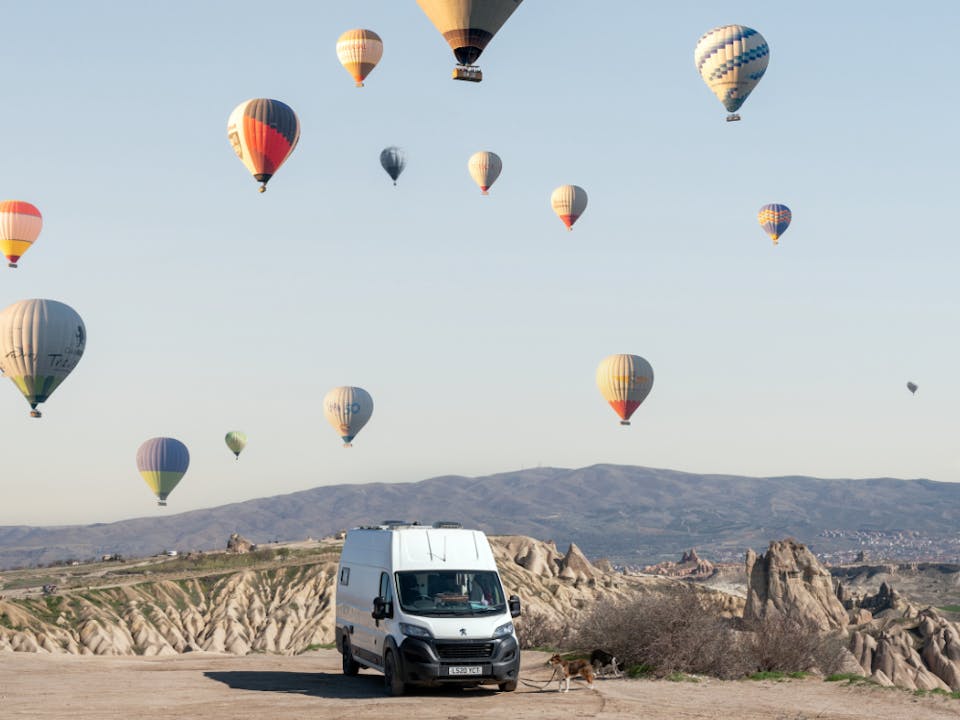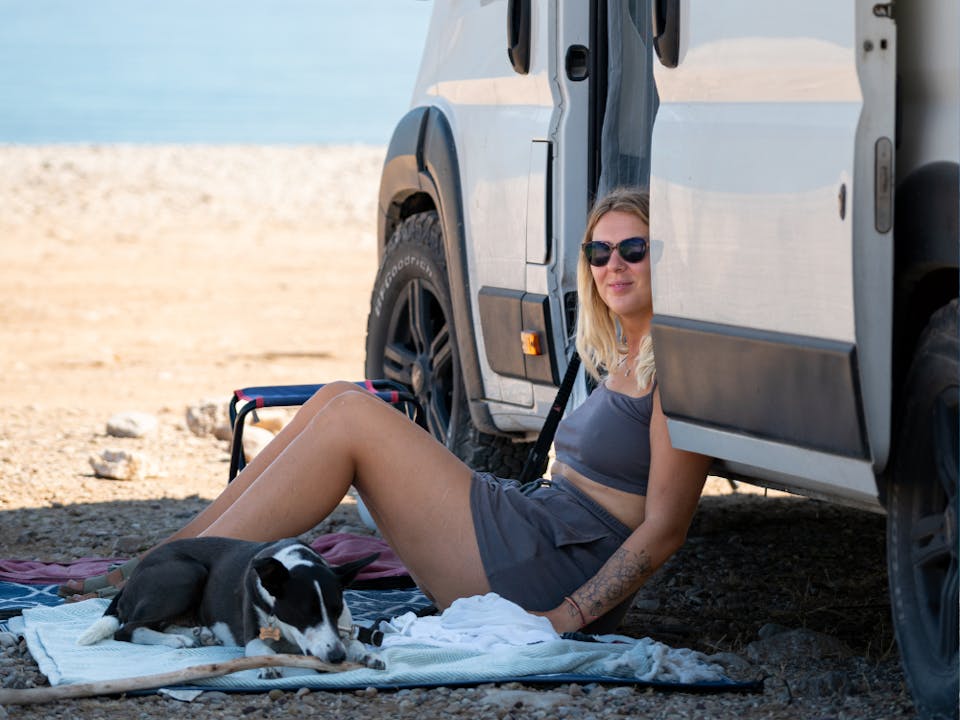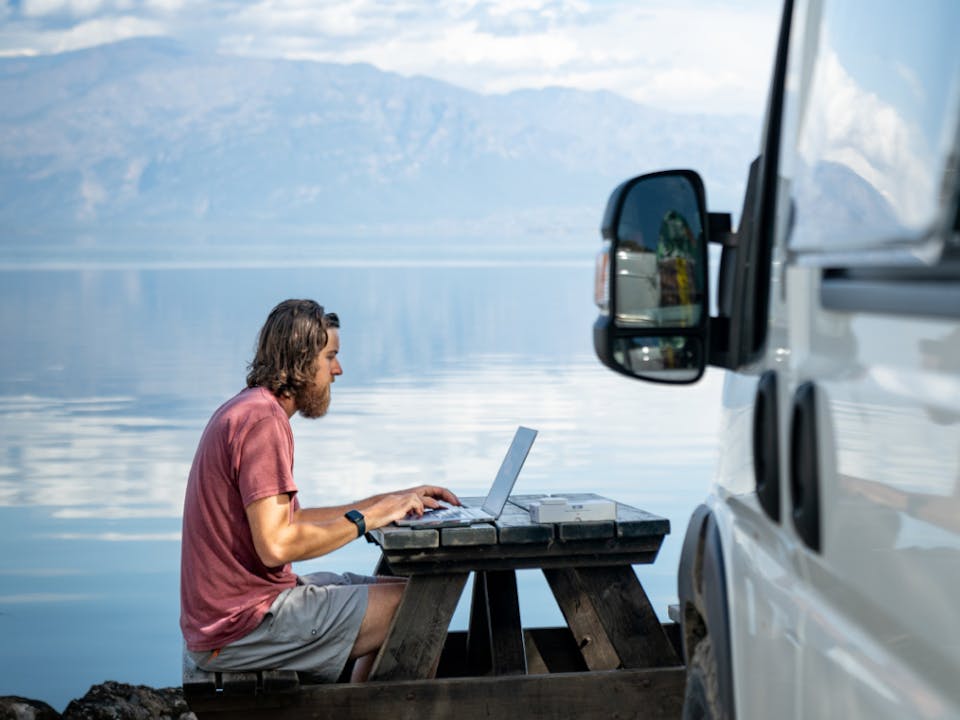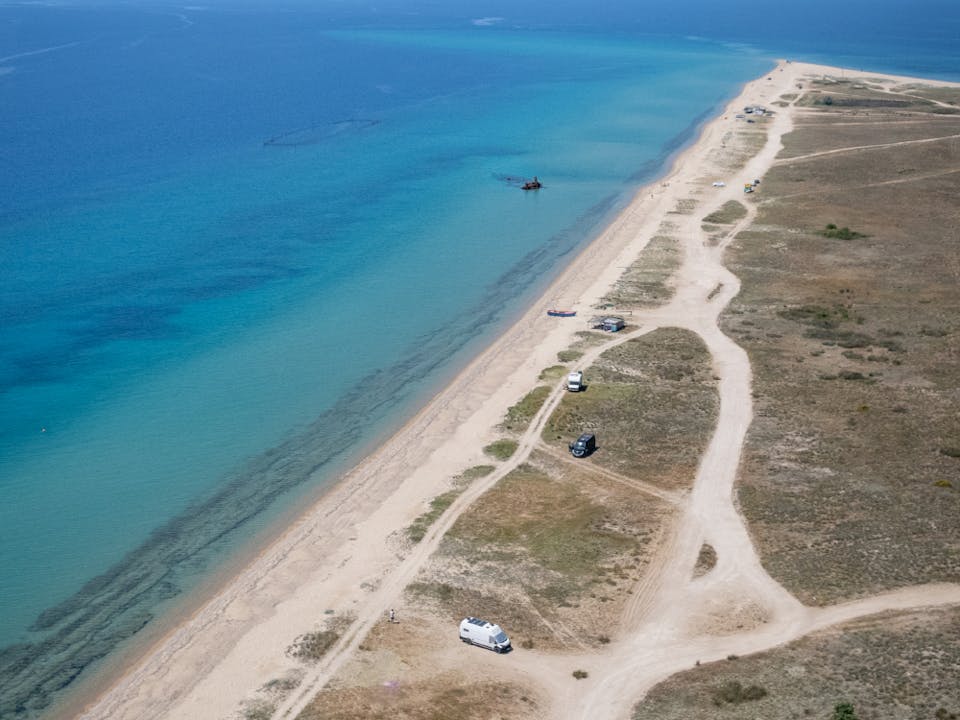
Travelling to Europe by van or motorhome
Travelling to Europe and beyond with your van or motorhome can be a daunting task the first time you do it. Rest assured it's a simple process once you know what you need to do in advance. Hopefully, you'll find this post useful and you'll soon be enjoying your first driving holiday abroad or just the start of a new vanlife adventure.
Documents
Let's start with the obvious one. You're going to need a passport. For most European countries your passport must also be valid for 3 months after you leave that country so check the expiration date before you leave. If you get into any trouble whilst abroad or your passport is lost/stolen you can apply for an emergency travel document on the UK Gov website.
Because you're driving your van or motorhome you'll also need to take your driving license and also carry your V5C. The V5C is required for some border crossings entering/leaving the EU depending on where you need to travel. We have had 2 friends denied entry to a country at the border because they didn't have their V5C. The V5C is also referred to as the vehicle's logbook.
UK residents travelling on a UK passport do not currently require any additional visas for entering Europe, however, this is subject to change (Potential implementation of ETIAS in 2024) and you must abide by the Schengen visa rules (that is up to 90 days in any 180-day period). Be advised that the EU does not equate to Schengen, despite most countries in the EU being part of the Schengen zone you'll want to clarify this before your trip to understand any limitations to your travel plans.
Document Checklist:
1. Passport
2. V5C (Vehicle logbook)
3. Driving License
4. Proof of insurance (vehicle)
5. Proof of insurance (travel)
If travelling with a pet you'll also need:
6. AHC (Animal Health Certificate)
7. or... EU Pet Passport
Driving Abroad
Insurance
The most important thing to check before leaving the UK is that your vehicle insurance is valid. Most insurance companies provide at least 90 days of EU cover but you must check this and make amendments to your policy in advance of leaving if required. You'll also want to ensure your van or motorhome tax and MOT is up to date or does not expire whilst you are away.
EU Breakdown Cover
It is advisable to also get an EU breakdown policy and have it start a couple of days before you plan to leave the UK. We decided on an AA European breakdown policy with annual cover and lots of additional benefits including parts cover and towing to either EU garages or worst case back to the UK. There are multiple cover types available, and from lots of different providers - If you're lucky you might have this included in your vehicles insurance policy.
Driving on the right
Different countries certainly have different driving styles but the basics remain the same. First of all, when leaving the ferry or channel tunnel remember to drive on the right! You'll likely find a roundabout in the first 5 minutes of driving so it's important to get driving to the right, and on the right into your head as fast as possible. You'll soon get the hang of it and forget driving on the left was ever a thing. We've not had any issues driving on the right side of the road in a right-hand drive during the last 10 months of being outside the UK. The only real difference you will find is that you'll have a bigger blind spot when turning left and onto major roads/motorways. The blind spot is most noticeable on T junctions or 90 degree turns where you might struggle to see across the cab. If you have a window fitted in the side of your van and an open bulk head you will be able to use this over your left shoulder. Our van is fitted with blind spot detection in the mirrors which is incredibly helpful when pulling out and overtaking on motorways however this doesn't help on the sharp corners. You can also use the wide angle mirrors to help with increasing your view. If your vehicle only has basic mirrors you can buy additional attachments to increase your visibility.
Tolls and Additional Taxes
Different countries have additional costs for driving on the roads. The main one is the increase in toll roads vs the UK. If you want to avoid tolls you can often choose this as a setting in your sat nav or on Waze/Google Maps etc. If we are specifically doing a long drive and want an easier/faster route we will use tolls. For example, we did the entire length of Italy and into in a day and a half using tolls. This cost around £80 but saved us hours and hours.
You'll also find tolls for tunnels such as the Mont Blanc tunnel which is 7 miles under the mountains connecting France and Italy.
Austria for example requires drivers to purchase a Vingette for (All Austrian motorways (“Autobahn”) and expressways (“S” roads) These can be purchased at petrol stations when crossing the border. They are inexpensive and last between 10 days, 2 months and 1 year. It's worth double checking the countries laws in which you plan to travel to stay compliant on the roads.
Crit'Air
If you are entering France and plan to travel around the country you might need to purchase a Crit'Air sticker. This needs to be purchased in advance of your trip as they will post the physical sticker to your UK address. 'The Crit'Air sticker (air quality certificate) classifies vehicles according to their polluting emissions of fine particles and nitrogen oxides. The Crit'Air sticker is mandatory for driving in low mobility emission zones (ZFE-m) set up by local authorities or for driving when the prefect introduces differentiated traffic during pollution episodes.' You can order your Crit'Air sticker from the official website here. You can translate the page into English and make sure you register as 'Vehicle registered abroad' when completing your purchase. You will also need your V5C document and a photo of this at the time of ordering.
UK Sticker
To drive legally in the EU you need to display a 'UK' sticker on your van or motorhome. Prior to Brexit these were 'GB' but those are now not recognised and it has to be 'UK'. You can find these easily as a permanent sticker, or magnetic version.
Additional Driving Requirements
For all mainland EU countries, you'll likely also need to purchase a set of headlamp beam deflectors. These are simple stick-on deflectors which will stop you from dazzling oncoming traffic when driving at night. If you're driving a modern vehicle you might be able to control this electronically and mitigate the need for the additional stickers.
Besides the UK sticker and beam deflectors there are some other physical items you need to keep inside your van to keep you EU road legal. You can either assemble your own kit or purchase a European driving kit online. These include items such as reflective safety vests (required for each person in the vehicle), hazard warning triangle, first aid kit and universal bulb kit. Some countries also require a fire extinguisher inside the vehicle. Because the requirements change (recent removal of the requirement to carry a breathalyser) it is worth researching the current requirements at the time of travel. If you plan to take your bikes with you, and these are mounted on the rear of your van in a carrier you might also need a red and white striped reflective board on the back. As a personal recommendation, we also advise carrying a tow rope, shovel and traction mats depending on how much 'off-roading' you'll be doing.
Next on the adjustments list is the change from Miles to Kilometers, this affects distances and speed. Your van will likely have a Kph display as part of the speedo, It's likely the smaller one to read but it will be there! If you have a Sat nav or digital speedo you might be able to change the default readout in the settings to Kph from Mph which will make your life easier. Different countries have different speed limits so also consider this when you're crossing borders. You'll often see these on road signs while driving.
Considering Climate and Tyres
If you are planning a winter trip or are planning on driving in mountains or resorts you might find yourself with additional requirements. Often during winter, these would include using winter tyres and carrying snow chains. To be the most compliant with your tyres you should opt for tyres with the 3PMSF symbol, the M&S symbol is not recognised as sufficient in some countries such as Germany. We were stopped on our way out of the Dolomites at a random police check in winter where they checked our tyres. Luckily, we were using BFG KO2 tyres on our van which comply with the 3PMSF rating.
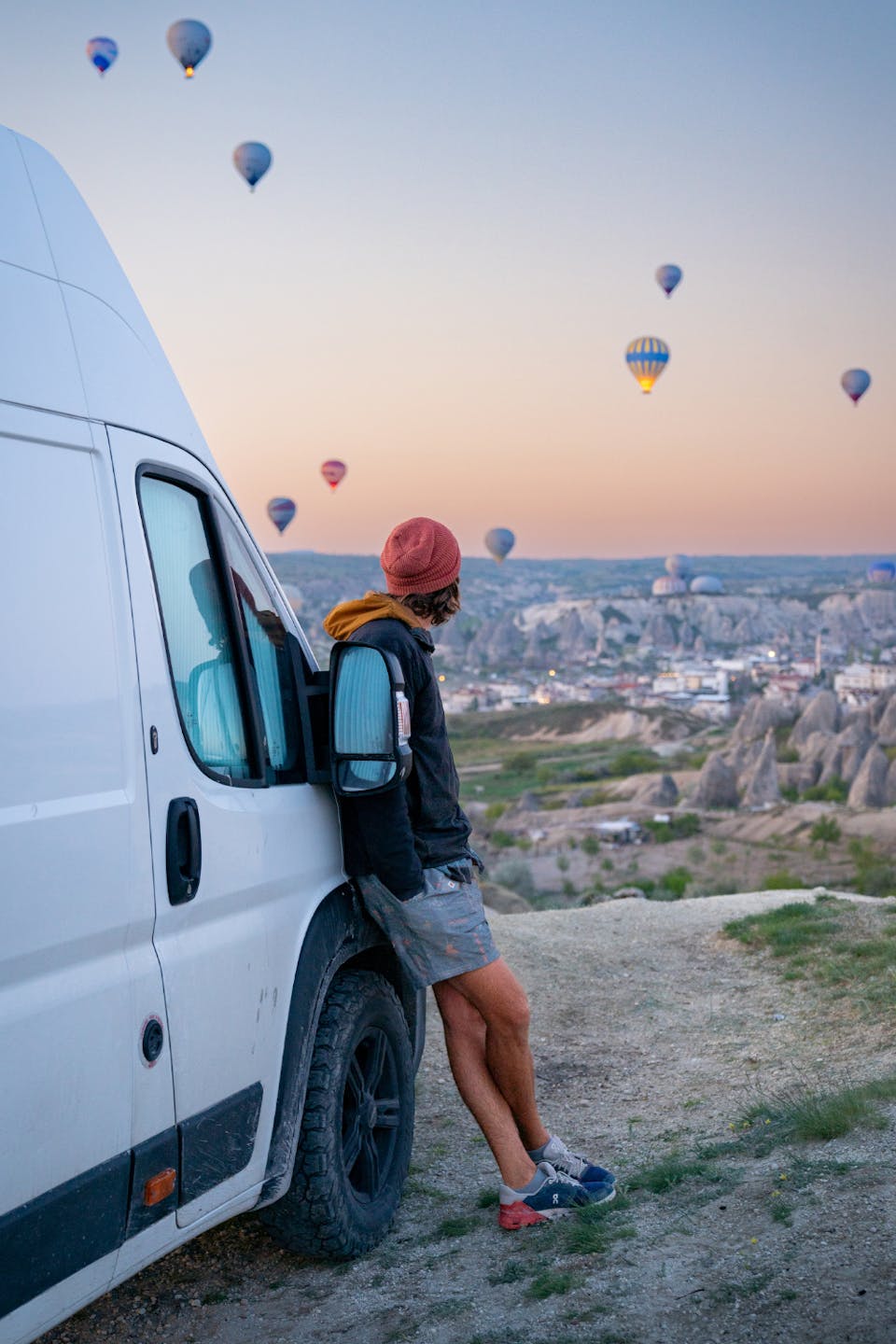
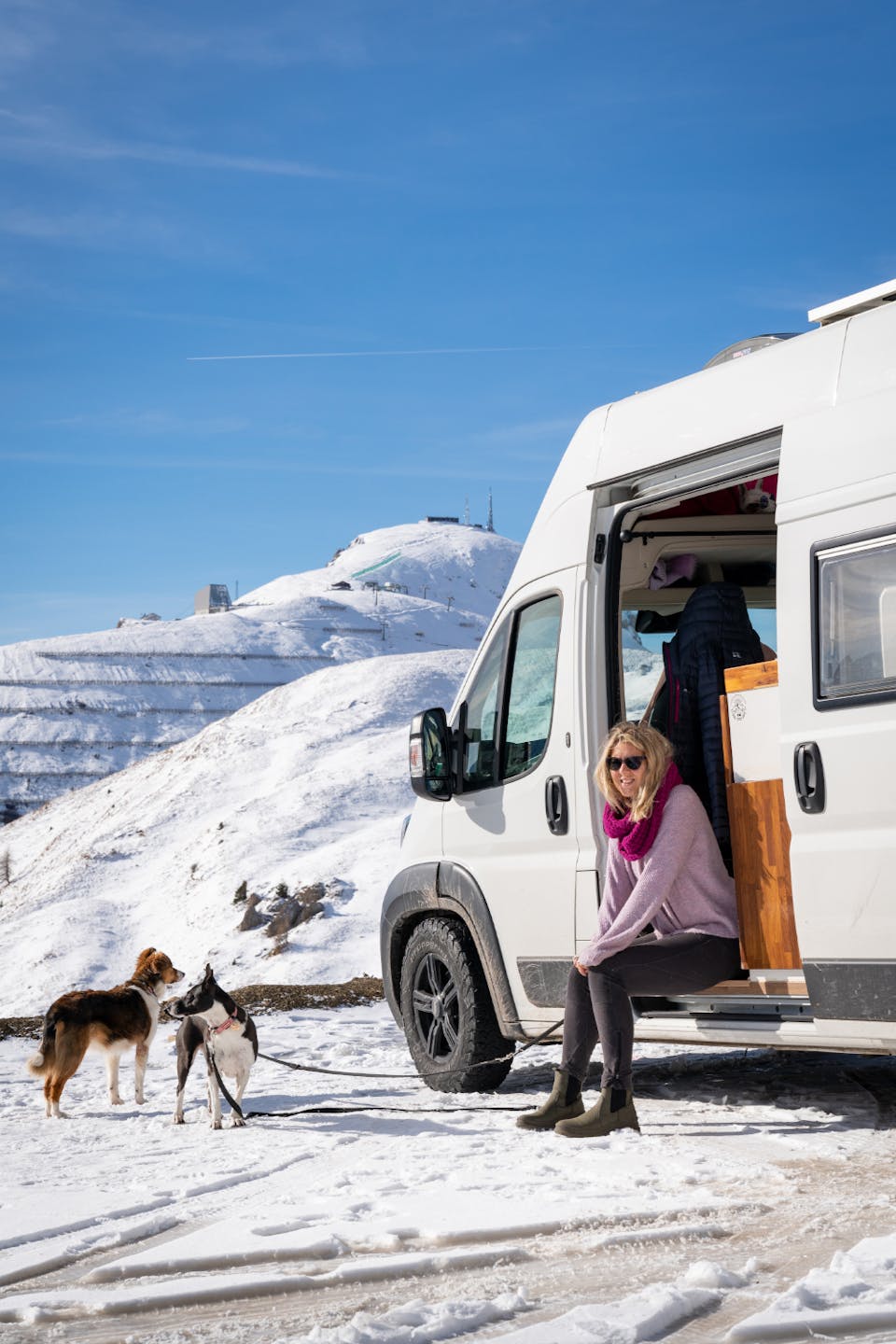
Food
Don't go travelling and expect to find exactly what you're used to in the UK supermarkets. Part of travelling is experiencing different cultures and cuisines. If you have very strict dietary requirements or certain food products that you really like, you might want to consider bringing these with you.
You are not allowed to bring meat or dairy products into the EU from the UK, this is to avoid introducing any animal diseases from abroad. We have a plant-based diet so haven't had to deal with this as an issue but we also can't imagine getting your fridge checked at customs.
Money
We would always suggest taking a small amount of local currency to any country you are travelling to, but you don't need to plan out your whole trip and travel with it initially. If you plan on taking a lot of money in cash you might be asked to declare it in advance, and at customs. The limit for this is currently £10,000, refer to the UK Gov website for more on this.
Access to money is simple in Europe via ATMs or bureau de change. Before leaving the UK you'll want to do some research on your existing bank to find out whether you are likely to have any additional transaction fees, or poor currency conversion when using both your card, or ATMs in another country.
We moved our banking over to Monzo which has 0 transaction or conversion fees. It has been a brilliant bank for travelling. The only limits to be aware of are the 'Transaction fee free' ATM withdrawals per month are limited to around £200 per 30 days and after that, there is a 3% charge. Monzo allows customers to use a referral code so new members get £5 (we also get £5 too) so you can use that here (if you like).
Internet
The chances are you'll want to stay connected whilst travelling abroad. One of many disadvantages to Brexit was the reintroduction of roaming fees. You'll want to check your mobile network to see what limits and additional costs you might face.
Jess has been using an eSIM from ConnectPlus in her iPhone and we also use a SIM Only package from ConnectPlus in our vans router. This works across most EU countries without any issues. You can find out more about ConnectPlus here.
Health and Safety:
Prior to your trip, you might want to apply for a UK Global Health Insurance Card ( GHIC ). The GHIC lets you get state healthcare in Europe at a reduced cost or sometimes for free. Regardless of this, you will also have to purchase independent travel insurance. You may already have access to travel insurance with your bank account - So check this first.
There are different types of travel insurance available (single trip/multi trip/annual cover etc) so you'll need to find the best one to suit your own requirements. If you are into extreme sports you will also have to declare these and often pay a surcharge to be covered for these. For example, Marcus has to have a specific policy which will cover snowboarding, kitesurfing and paragliding.
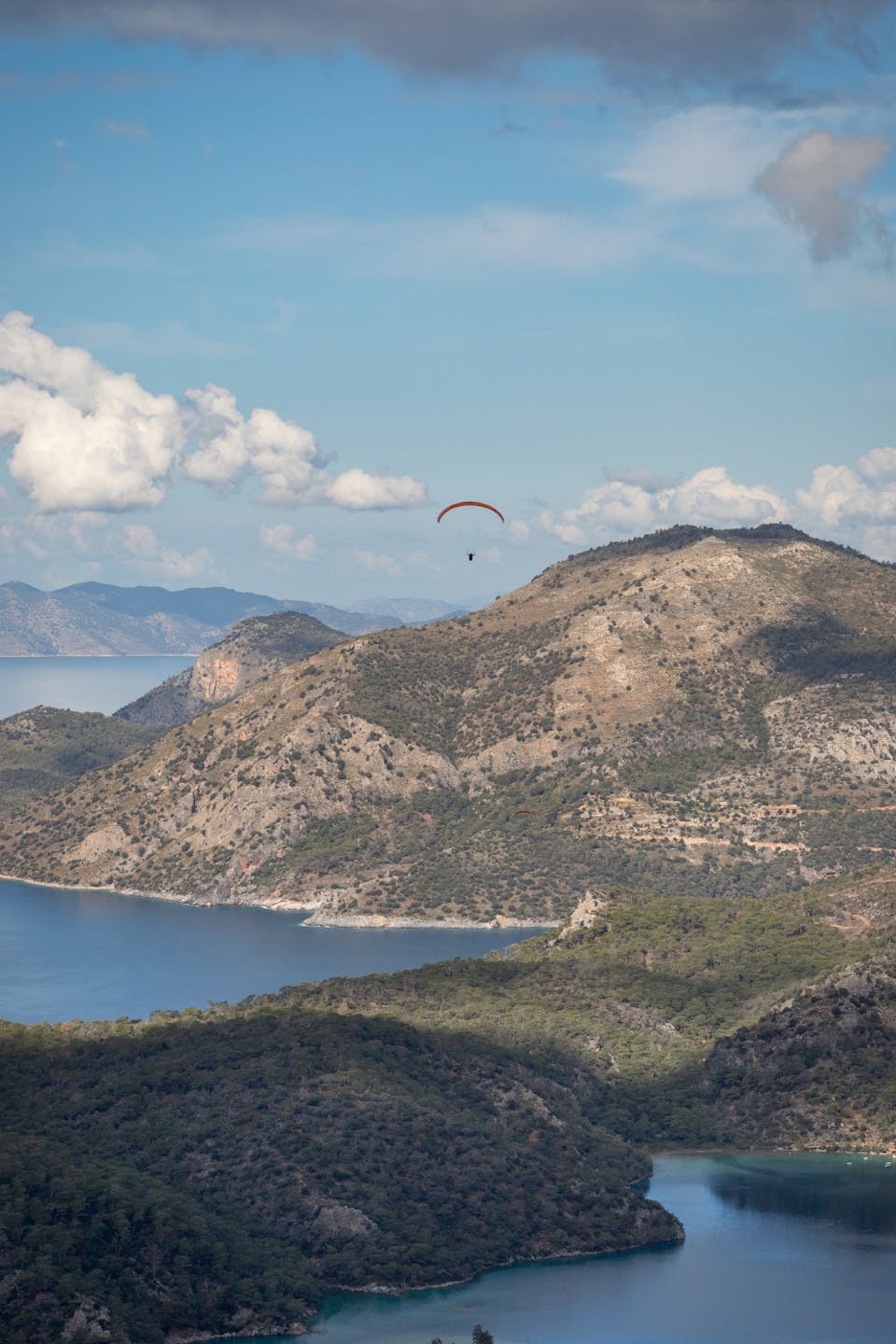
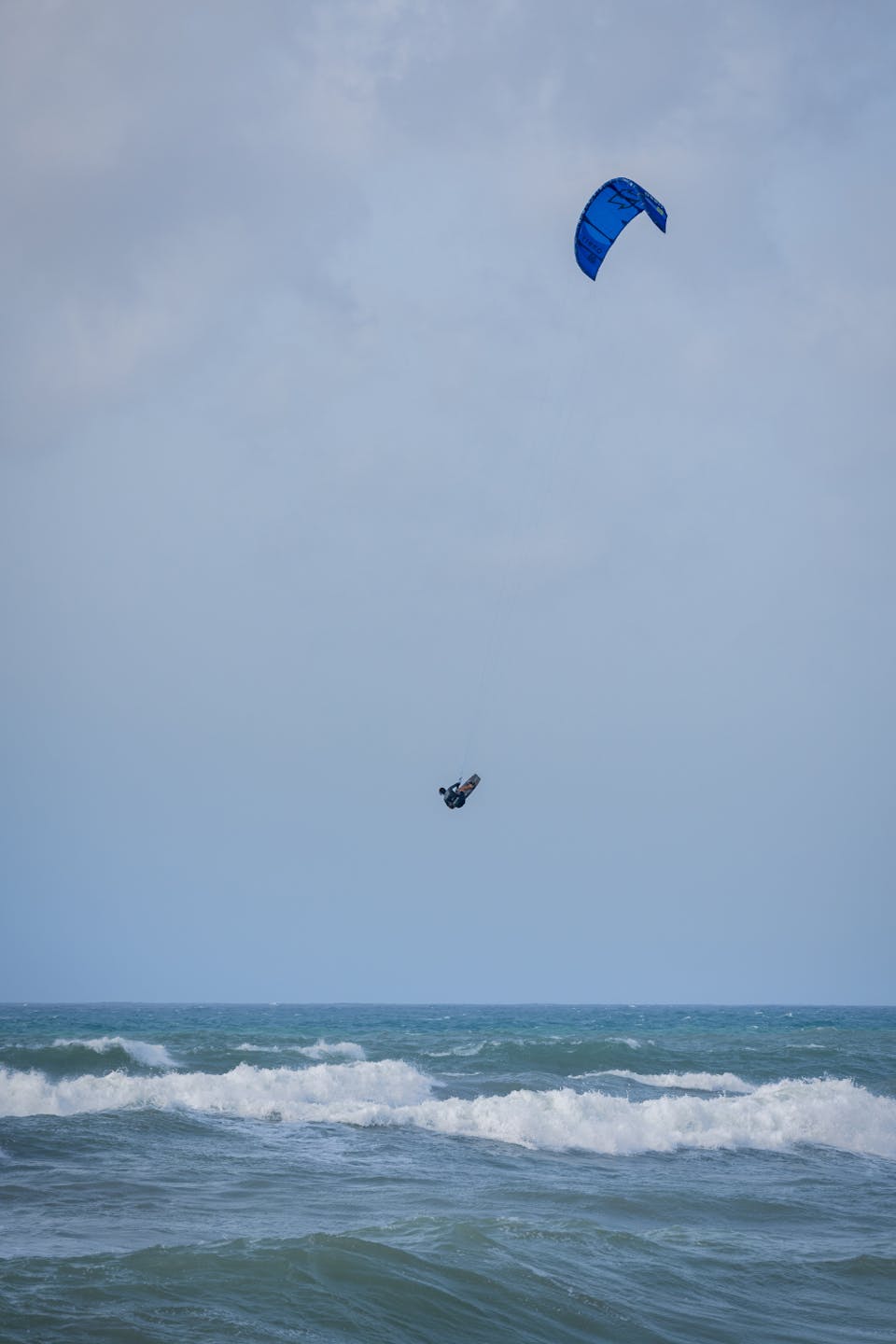
Emergency Services:
You can call 112 to contact the emergency services in any EU country.
Apple iPhones have a feature to dial emergency services that automatically detects the correct number and dials for you. You can access this by holding your power button and volume up simultaneously. Another great feature for iPhone users is the 'Medical ID' function. You can populate this information with as much or as little information as you like, it means that if you are in an accident anyone with your phone can access specific information without knowing your pin or passcode.
Example information that we share. Full name, age, weight, height, any existing medical conditions, any allergies, medication and also 3 emergency contacts. We have each other set up as Spouses and also have our Mum/Dad.
If you are looking for health care for yourself or perhaps a pet you can open up Google Maps and search within the vicinity of your location for places like hospitals, vets and doctors.
Accommodation
Vanlife in Europe is far easier and more accessible than in the UK. It's easier to find park ups, access resources and meet other people living or travelling on the road. We've got a separate post specifically about how we find park ups.

